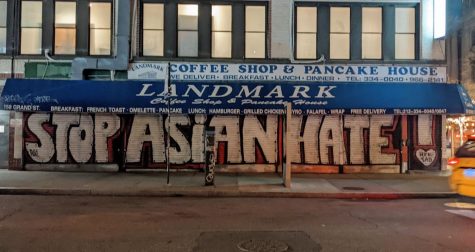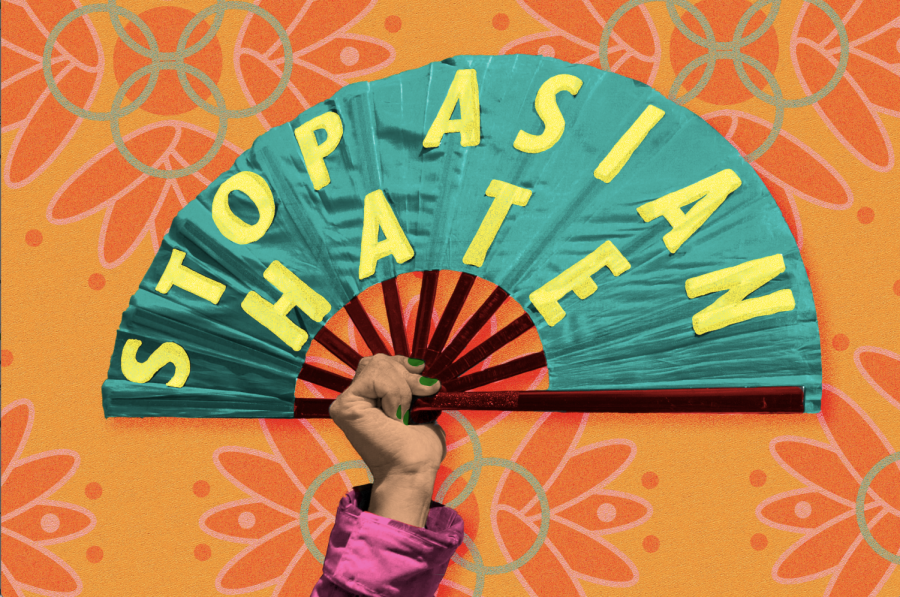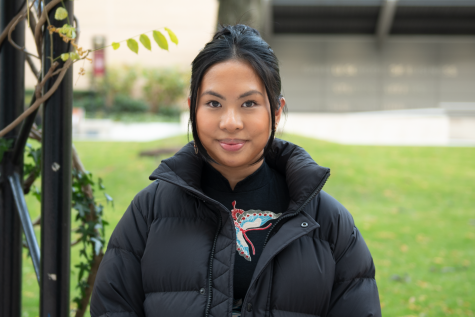NYC’s Inappropriate Response to Stop Asian Hate
Stopping Asian hate doesn’t mean overpolicing the city’s most vulnerable
March 8, 2022
Right now is not the best time to be Asian in New York City.
There’s been a spike in detected anti-Asian hate crimes; Chinese Americans have been blamed for the COVID-19 pandemic; and Linsanity hasn’t been a thing for a decade. You know it’s bad when #StopAsianHate is a trending hashtag.
The Stop Asian Hate movement arose in 2021 after the spike in documented hate crimes against people of Asian American and Pacific Islander (AAPI) descent during the coronavirus pandemic. Hate has been goaded by the belief that the virus originated in Wuhan, China, and a blustering president who called the disease “the Chinese Virus” and “Kung Flu” and who has stoked animosity toward Chinese Americans.
Despite all of the evidence suggesting that anti-Asian hate is at an unprecedented level, there hasn’t been much decisive action by our leaders to follow up on the hashtag.
Obviously, Chinese people in America do not have some intrinsic connection with the virus because of their nationality. Even further, there is evidence to suggest that the deadly outbreak in 2020 could have come to America from Europe, not China.
None of this deterred the thousands of instigators who have committed anti-AAPI acts since 2020. According to a report by the watchdog “Stop AAPI Hate,” over 10,000 incidents of anti-Asian hate were reported between March 2020 and September 2021.
Some of the more publicized deaths include those of Michelle Go, who was pushed in front of an oncoming subway car in January 2022; Christina Yuna Lee, who was stabbed to death in the vestibule of her own home in February 2022; and the March 2021 shooting spree targeting three massage parlors in Atlanta, Georgia, where eight women, six of them Asian, were killed by one man on the same day.
Despite all of the evidence suggesting that anti-Asian hate is at an unprecedented level, there hasn’t been much decisive action by our leaders to follow up on the hashtag.
Politicians like New York City Mayor Eric Adams don’t see #StopAsianHate as a rallying point but rather an excuse for other political action. In the discourse of how NYC should move forward in the wake of the high profile murder of Go, most of the focus has been on issues of homelessness and mental health.
Adams recently unveiled a plan to crack down on people taking shelter in the subway systems, which includes increasing police presence in the subways. These measures were constructed to address something which has been happening for years, but their timing was obviously influenced by Go’s murder on Jan. 15. In fact, the most glaring reaction is not the new program, but rather a lack of acknowledgment of the race of the victim.
The use of the Stop Asian Hate movement as a means of enacting politicized action is inhibiting real change.
The use of the Stop Asian Hate movement as a means of enacting politicized action is inhibiting real change. In our city, we can see it in the ways Adams has chosen to address the tragedy of Go’s death.
The focus on homelessness is both degrading to a group of people who still deserve dignity and human respect and addresses a phantom issue which has been overblown by media narratives.

Presidents’ Day weekend saw a rash of violent incidents on the subway system, but only two people involved were without housing, and one of those was a victim. It is also unclear what role mental illness played in any of the incidents. The fact of the matter is that while Go’s death was an anomaly in terms of how she died, the discrimination she faced has been a fact of life for Asians long before the pandemic started. It has simply been brought to the public eye in the wake of racist language and a surge of violence pertaining to COVID-19.
The reality of the Asian existence is that our race is a part of who we are.
Go didn’t do anything to deserve being pushed in front of that train, but she was Asian, at the wrong time and in the wrong place, and for that, she paid the ultimate price. The man who killed her was experiencing homelessness and has a history of mental illness, but that doesn’t excuse Go’s death or make it any less undeserved. The obsession with identifying his illness leads one crucial detail to slip by unexamined: Go’s race.
Go’s murder has not been classified as a hate crime because her killer has not displayed direct racial animus. However, this stipulation avoids an obvious fact of her death. I don’t know if she would have been killed if she weren’t Asian, but I do know that despite what some people are willing to say, her race was a factor in her death.
I know because my girlfriend and I are Chinese, and we’ve experienced this discrimination firsthand. I know because I once had to ask my friends to get off a train before our stop because a man was hurling swears, slurs and saliva in our direction from the seat across from us. I know because America’s history of discrimination against Asians dates back to before the Chinese Exclusion Act, and deep-rooted prejudices like that never fully disappear.
The reality of the Asian existence is that our race is a part of who we are. We take pride in it — Chinatown and K-Town are vibrant examples of that — but there is also an underlying fear. Many Asian people deny that that fear exists, but it still permeates the society that has been constructed around us. I don’t know what Go and other Asian victims would have wanted in the wake of their murders, but I’m sure that it’s not what Adams and New York Gov. Kathy Hochul are doing.
Go was a person who volunteered her time and effort for years to preserve the decency of all people, including those without a home. Honoring her legacy does not mean expelling people taking shelter underground from the subway, but rather addressing and redressing issues of racism, personal and systemic, in her city.
Adams’ plan to overpolice the subways is harmful fearmongering and avoids the real issues at hand. But more importantly, it goes against the principles it is meant to reinforce, and that is why we need real conversation about how to stop Asian hate.


















Realistic • Apr 8, 2022 at 4:14 am
It is all fun until your mom get stabbed by those homeless, right?